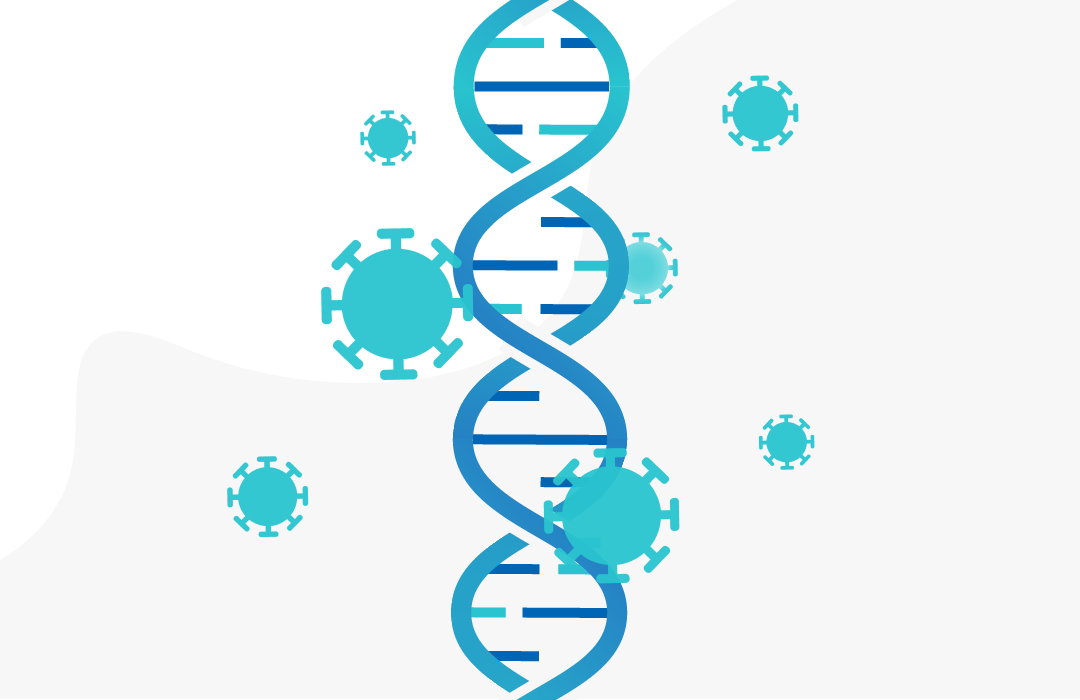%20(1).png)
Is diarrhoea a symptom of COVID-19?
April 1, 2021

This article has not been updated recently
Data from millions of ZOE COVID Symptom Study app contributors has shown that diarrhoea can be a symptom of COVID-19. Here’s how to spot it and what it feels like.
What is diarrhoea like in COVID-19?
Even though diarrhoea is a less well-known symptom of COVID-19, it affects a reasonable proportion of people during their illness.
Having COVID-19 diarrhoea alongside many other symptoms is associated with an increased risk of needing hospital support.
Diarrhoea caused by COVID-19 is similar to the upset tummy you might get from a regular stomach bug, such as rotavirus or norovirus. Diarrhoea is common in children and adults and usually clears up by itself.
We think COVID-19 causes diarrhoea because the virus can invade cells in the gut and disrupt its normal function.
COVID-19 can be transmitted through poo and contaminated surfaces or hands. It’s critically important to wash your hands thoroughly and regularly clean bathrooms if you, anyone you live with, or someone you’re caring for has diarrhoea, to prevent the infection spreading.
When does diarrhoea happen in COVID-19?
Diarrhoea is an early sign of COVID-19, starting on the first day of infection and building in intensity during the first week. It usually lasts for an average of two to three days, but can last up to seven days in adults.
Some people can suffer from ongoing bouts of COVID-related diarrhoea, and these are commonly reported in people with long COVID or post-COVID syndrome.
How common is diarrhoea in COVID-19?
Diarrhoea isn’t a very common symptom of COVID-19 but the likelihood of having it increases with age. 10% of children, 21% of adults aged 16-35 and around 30% of adults aged over 35 experience diarrhoea during their illness.
Only 2% of people who were ill with COVID-19 reported diarrhoea as their only symptom.
What other symptoms of COVID-19 are common alongside diarrhoea?
Diarrhoea is most likely to occur alongside other symptoms. Which symptoms these are depends on age and whether you have a localised COVID-19 affecting mostly your gastrointestinal system or an infection that affects more of your body.
In adults, most of the time diarrhoea comes alongside fatigue and headaches. In addition, adults tend to experience diarrhoea with loss of smell (anosmia), and it is reasonably common alongside a sore throat and skipping meals. In children, diarrhoea tends to occur with fatigue and headaches and sometimes with abdominal pain, a sore throat and anosmia.
Diarrhoea has also been associated with a greater risk of needing hospital support, particularly among people also reporting abdominal pain and unusual muscle pain.
Depending on your age and sex, you should contact your doctor if you have multiple different symptoms of COVID-19 in the first week of being ill.
What should I do if I have diarrhoea and think it might be COVID-19?
If you have diarrhoea and think it might be COVID-19 you should:
- Follow the NHS guidelines and self-isolate at home to help protect the people around you and the wider community. Make sure you keep your bathroom clean and wash your hands after using the toilet.
- Download the ZOE COVID Symptom Study app and log your symptoms to be offered a test through the app.
- Also log your health daily in the app, if you’re not already, to help us understand more about how COVID-19 affects people and contribute to life-saving scientific research.
- Check out our tips on looking after yourself if you are sick with COVID-19, monitoring your health at home and staying hydrated.
If you have diarrhoea, it’s important to keep drinking and eating if you can. The NHS has more advice for treating diarrhoea.
Diarrhoea increases the risk of spreading infection to others in your household, so it’s essential to wash your hands thoroughly and keep bathrooms clean and tidy.
Stay safe and keep logging.












.png)


.jpg)














.png)







%202.png)
.png)


















.png)






